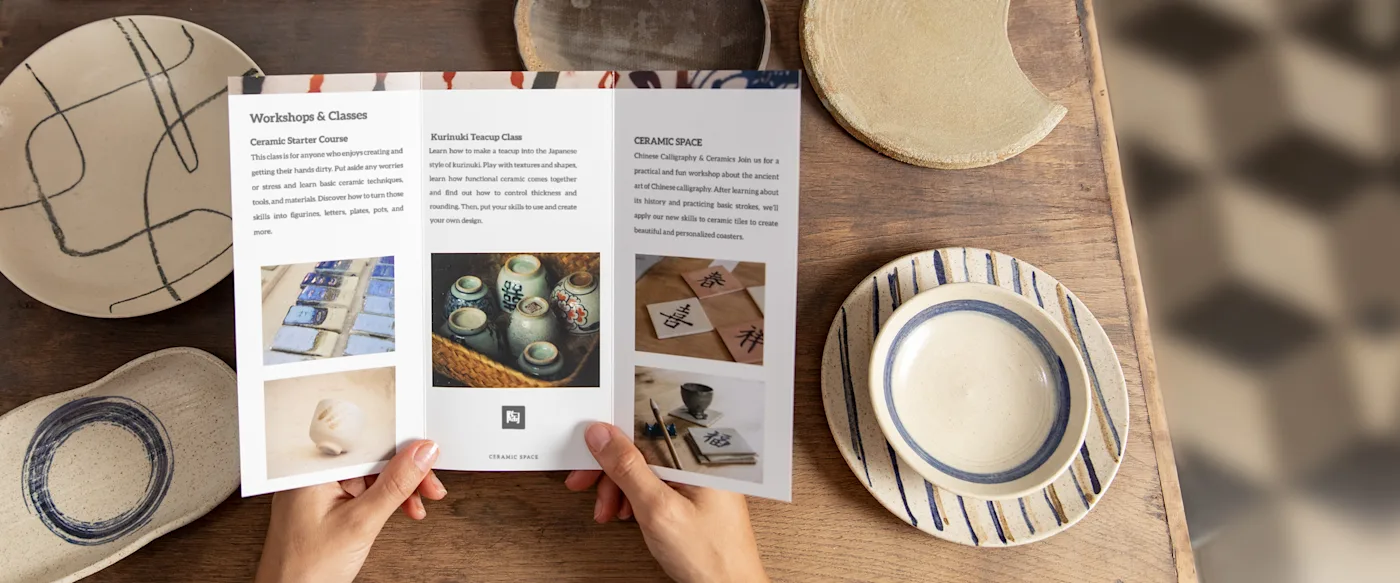There’s a quiet power to brochures. Whether you’ve picked up a sleek, minimalist product brochure from your local store, casually flipped through a vibrant event tri-fold at your favorite venue or felt the texture of a luxury brand’s showcase piece at a shop, brochures have the ability to silently weave intricate tales of brands, services and events.
But what is a brochure? We believe they’re more than just pieces of paper – they’re tactile stories, windows into the roots of brands, the unsung heroes that connect businesses to people.
Basically, what we’re trying to say is, we think brochures are a powerful marketing tool – and we think you should too.
That’s why we’ve put together this guide on brochures. We’ll take you through what brochures are, what makes them effective and how to craft your own.
So get ready, as we dive into the wonderful world of brochures.
Definition of a brochure
At its core, the brochure definition is simple. It’s a printed marketing material designed to provide information about a business, product or service.
Designed with specific audiences in mind, brochures will typically combine text and images and aim to inform, educate or persuade their readers.
But moving beyond the technical, a brochure is far more than just paper and ink – it’s a tangible extension of your brand. A warm handshake to introduce people to your business, a heartfelt hello to express your values, a welcoming journey through your brand’s ethos.
This marketing tool, often used alongside digital marketing strategies, carries the weight of your brand’s narrative. Each page or fold carries your brand’s mission and invites engagement from your target audience. Whether it’s introducing a new product line, sharing your company’s history or providing instructions, brochures bridge the gap between you and your audience.
What is the purpose of a brochure?
Brochures are universal storytellers. Their ubiquity across industries and cultures speaks volumes about their versatility as a marketing tool, as well as their enduring appeal.
Let’s take a deeper look at the purposes they serve:
- Awareness: Brochures don’t just introduce your brand – they also play a pivotal role in shaping the awareness and perception of your product, service or event. They can pique interest and make sure your audience knows the exact message you’re putting out into the world.
- Sales: Brochures can act as your silent salespeople. They offer detailed information about your products or services, including features, benefits and pricing. This helps your potential customers make informed buying decisions, therefore promoting trust in your brand. And of course, increased trust can lead to increased sales and customer loyalty.
- Guidance: Brochures are also fantastic instructional tools. Whether it’s a guide on how to use a product, a map for a festival venue or a step-by-step guide, a well-designed brochure makes sure your customers have the essential information they need, right at their fingertips.
- Narrative: Brands, especially those with rich histories or unique value propositions, can use brochures as an avenue to share their stories. But this isn’t just about detailing your company’s timeline; it’s about communicating core values, visions and missions – helping to foster deeper understanding and connection with your audience.
So essentially, while brochures come in different shapes and sizes, their core purpose remains the same.
To inform, to engage and to connect with your audience.



